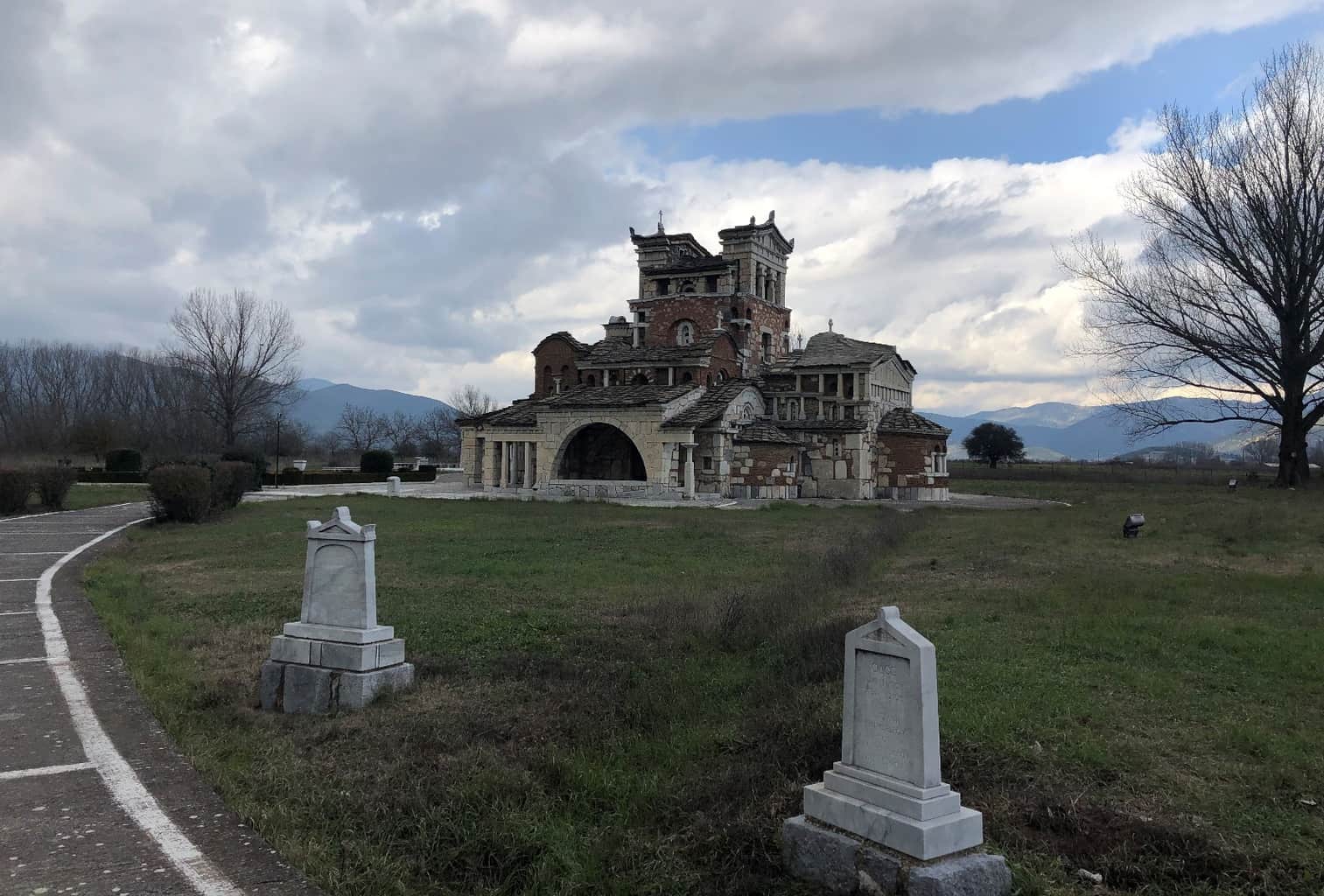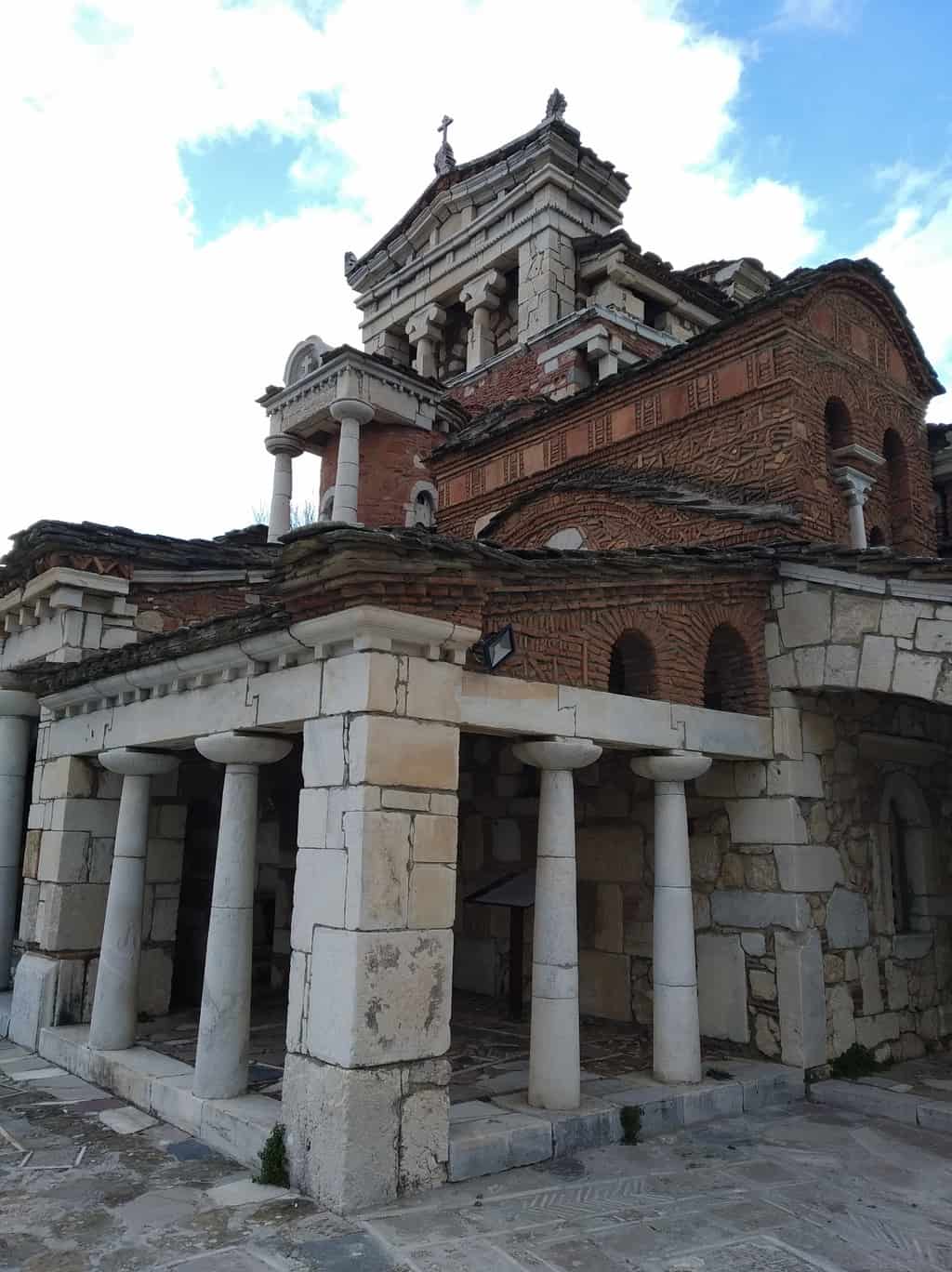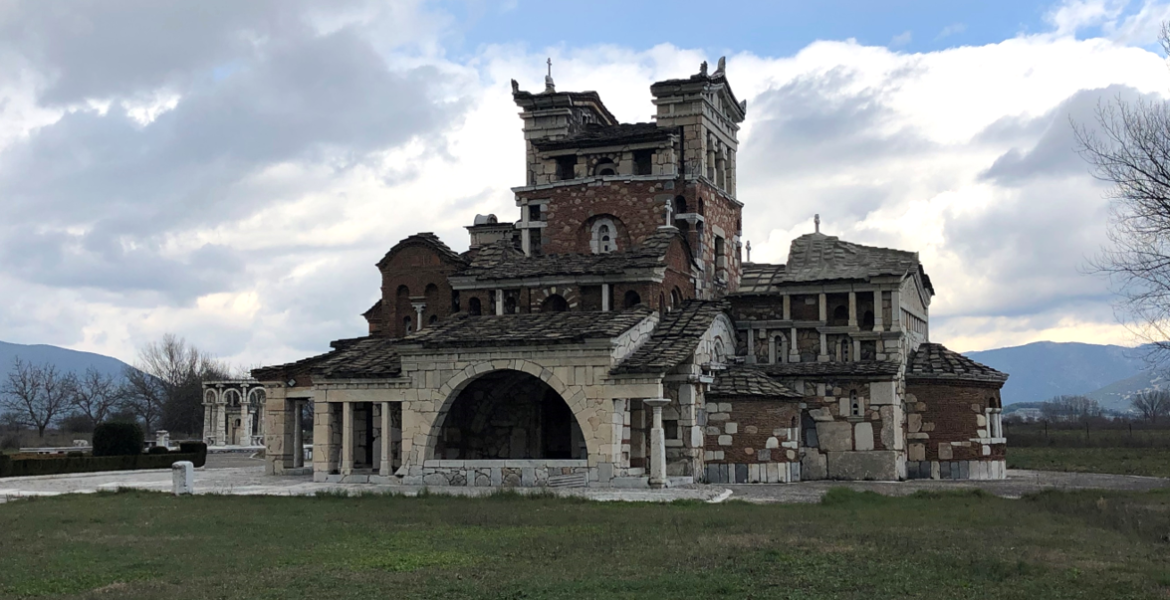The Orthodox church of Agia Fotini of Mantinea is a 'stone legend' located in the region of Arcadia, Peloponnese, and combines a variety of architectural styles and cultures, unlike that of any other Christian church.

In a recent list published by TripAdvisor for the strangest churches in the world, next to the Santuario della Madonna delle Lacrime in Syracuse, Italy and Gaudi’s La Sagrada Familia in Barcelona, Spain, Agia Fotini holds a special place.
This list by TripAdvisor is not the only list that has featured Agia Fotini for its unique appearance.
The peculiar church has attracted the attention of visitors, architects and historians for many years now, with the international press calling it the “2nd most mysterious church in the world”, after Saint-Sulpice’s church in Paris.
Built right next to a rural road, opposite of the plain of Ancient Mantinea and the archaeological site of the city – where the famous Mantinea Battle took place between the Thebans and the Spartans – the church was founded in 1969 and inaugurated in 1978, by the then metropolitan bishop Kyros Theoklitos II Philippios.

Externally, the Agia Fotini church seeks to be a bridge of civilizations and differs from all other temples of its kind, combining an alloy of rhythms.
The diversity of its materials (including rock, marble, brick) combined with its overall architecture, create feelings of admiration and awe in passersby.


Award-winning Spanish architect and town planner Alfonso Toribio, president of the Official College of Architects in Spain, stated that;
“Agia Fotini gives the impression of a living building. It makes you think that it moves, while trying to rotate around its axis.
"There is no right angle in the building. It breathes the Arcadian air, and its facade takes the direction of the wind that blows from the East.”
Situated in a 'pole' of touristic attraction, near the popular villages of Vytina and Levidi, as well as the Ancient Olympia, the Agia Fotini church surprises those who drive by who are unaware of the monumental church that converses nature and history.
What makes the church so different from every other church in Greece is that it does not classify in any particular school of architecture.
In a strange way, it combines elements of ancient Greece with the Christian spirit, as inspired and implemented by its creator, architect, painter and hagiographer, Costas Papatheodorou.
“Agia Fotini is a building that divides people, and everyone sees it in their own way," Mr. Papatheodorou said.
"Depending on a person’s taste, he or she can characterize it from impressive and a masterpiece to bad taste and outrage."
The church’s roof also has an impressive and eclectic architecture, as it presents archaic rhythms with elements of Byzantine influences.
“The church is built on levels, where one seems to step on top of the other,” Mr. Papatheodorou described.
“Movement plays an important role in the whole church. The architecture is also symbolic. The upper end of the temple looks like a gable, but sinks within, just like the poor huts of the plain of Mantinea in the 70s," he added.
"At the same time the temple bends high under the weight of many Saints.
"Some parts of the temple, such as the columns, have been sculpted in a way that creates the illusion that they were once made of wood and then replaced by marble, just as was the case with temples in antiquity.”

The construction of the church began shortly before 1970 and was completed – externally only – in 1973.
The request to build a church in the area was made by the Mantinean Association, which was looking for a prestigious architect to build a majestic and special church for the city.
The choice to hire and entrust Costas Papatheodorou, an almost unknown architect at the time, who worked at the Minister of Culture, created outrage within the Mantinean Association.
However, Mr. Papatheodorou immediately accepted the offer, resigned from his position in the ministry and devoted himself completely to the church, shielding the work of life.
“For me it was a life dream!” Mr. Papatheodorou explained. “When I saw the area with the makeshift huts, the thatched roofs and the green fields, I said it was the ideal spot."
"In an area surrounded by Mainalo, Artemisio, the mountain where Hercules cleaned the dung of Augeas, an area of simplicity, poverty and naivety that I sought through my work.
"This was a humble and simplistic landscape, but it was Greek. And it is historic for Greeks. After all, the place of worship of God does not have to be complicated.”


The interior of Agia Fotini showcases its vivid Byzantine influence, with elements and aesthetics drawn from Ancient Greece and Greek culture.
This can be seen strongly right in front of the altar of the church, with the mosaic floors and the representations on the walls. The hagiographed figures are painted as if they were portraits of Ancient Greek philosophers, while the wall paintings of Saints are simplistic and resemble ordinary people.
In fact, when the church was first built, the hagiographies of Jesus, the Saints and Judas were presented with everyday modern faces borrowed from the people of Tripoli, wearing casual clothes of the time. This created outrage within the Greek Church and the religious community and as a lot of attention was attracted, hagiographies were replaced quickly.
The church stayed open to the public thanks to the support of the local people and the intense interest of foreign visitors, providing evidence to everyone about the significance of the church for Greece, Christianity and the art of architecture.


Apart from Byzantine, Ancient Greek and folklore elements, the church also has details that are found in catholic churches.
Inside, one finds, among other things, mosaics by Hippolytus of Euripides, and other representations from ancient mythology that coexist with Christian stories today.
The church’s mysteries are unending with symbolisms and mosaics of the Medusa, Ariadne, Theseus, Pindar, and also references to the Greek poet Papadiamantis, among other influences that merge Greek myths and heroes with Christianity.


In the area surrounding the church, there is a hero on the right, that honours the fallen soldiers, and is influenced by Ancient Greek and Roman architecture. On the left side, there is the so-called 'Jacob's Well', an elegant peristyle fountain with an impressive construction.
“From a young age I had a passion for religion and Ancient Greek mythology. I admired what Thales and Heraclitus said that ‘God is in motion’. The word ‘God’ in Greek comes from the word θέω, which as explained by Plato means ‘I move’ or ‘I run’. That is why my goal was to create a church that creates the illusion of motion. It feels like the Holy Spirit moves around its axis, God himself moves around its axis, as the church has no obvious front and back.”
Agia Fotini is a unique creation and a real piece of art, located in a historic place. It is a coupling of Ancient Greece with religion, and an exhibition of empowerment of the Christian spirit and faith, through the recognition of antiquity, Greek culture and Greek heritage.


Read also on Greek City Times: History of the Evzones, Greece's Elite Guards


